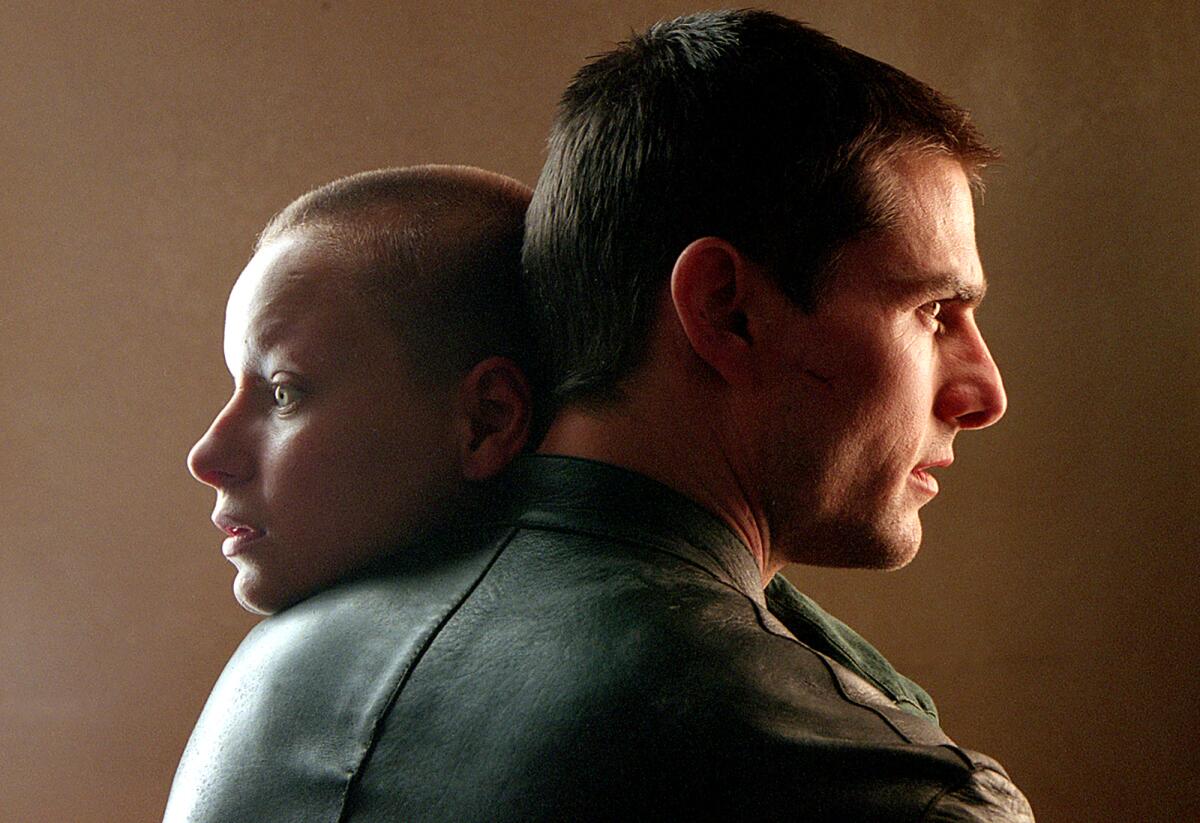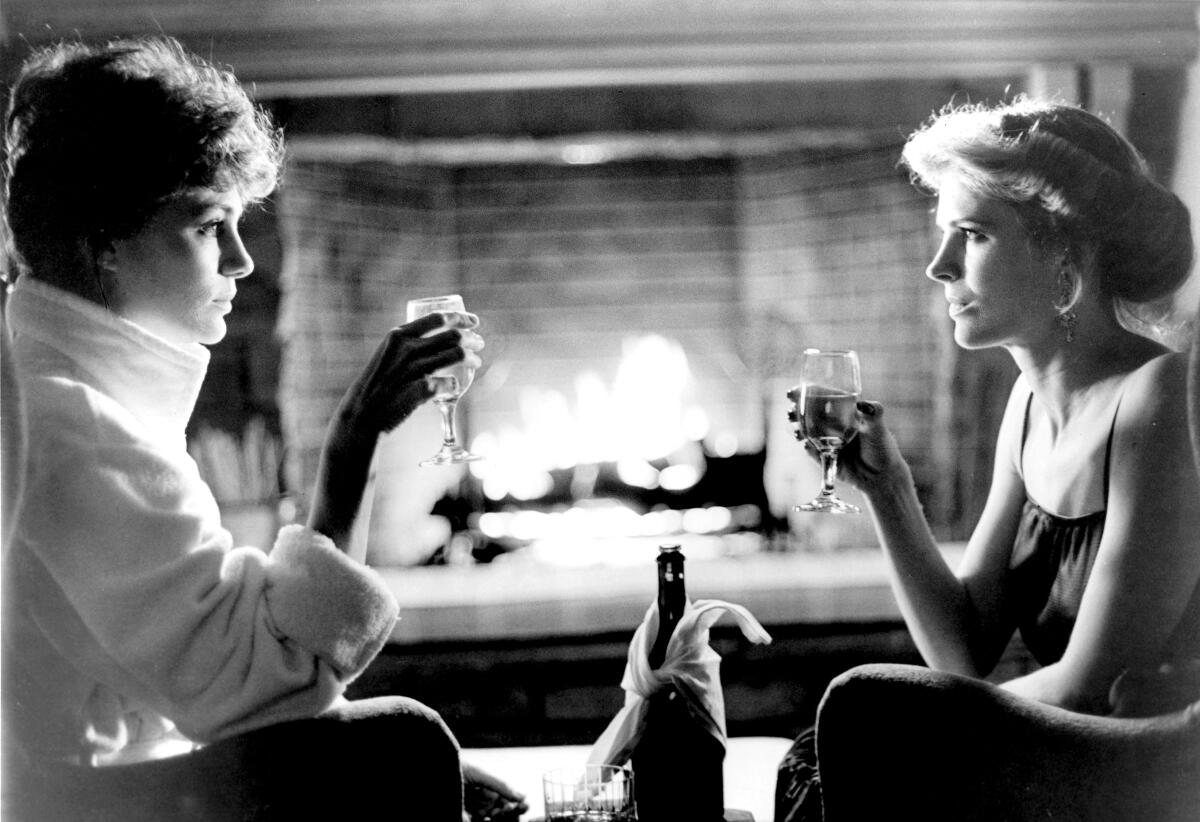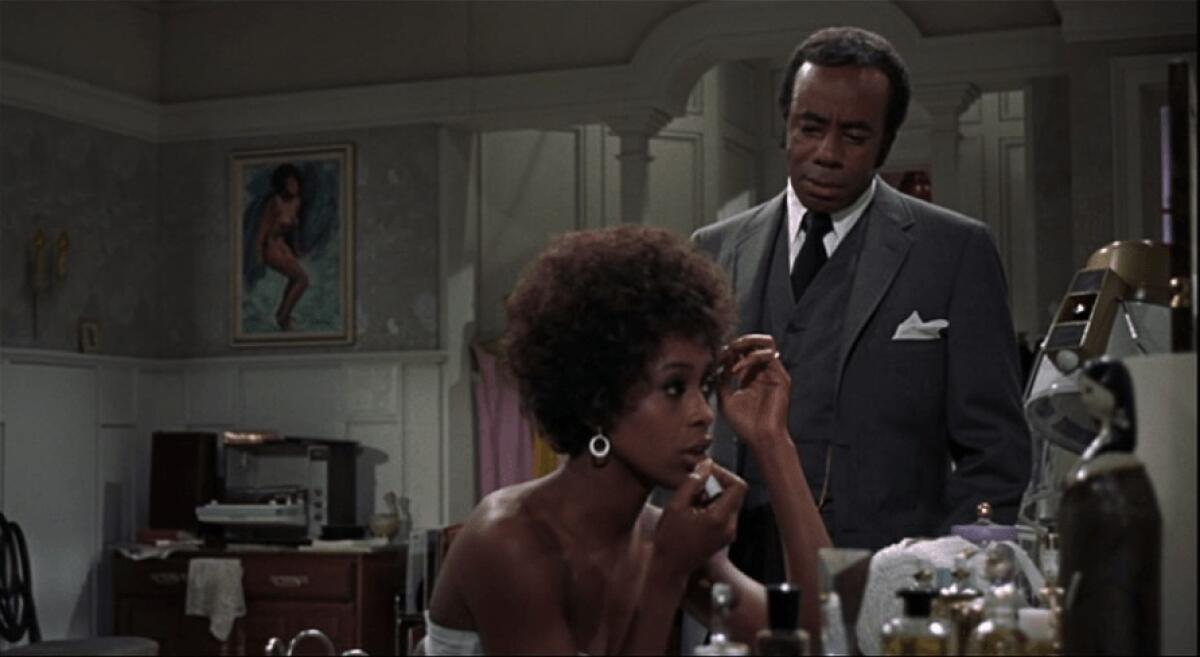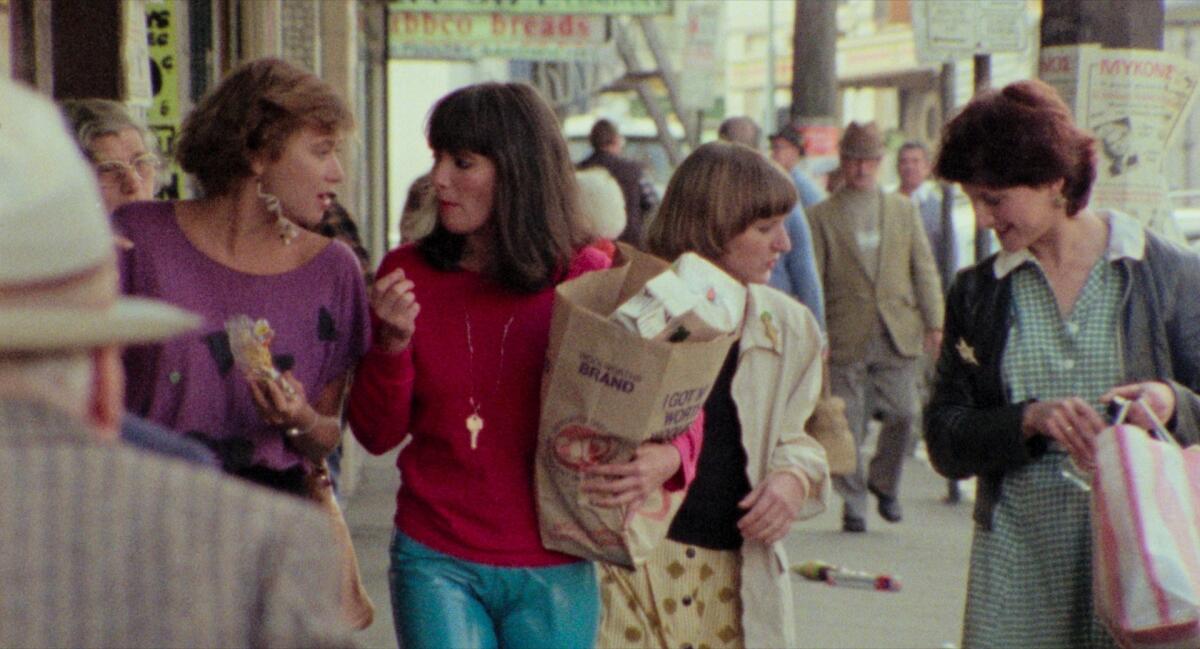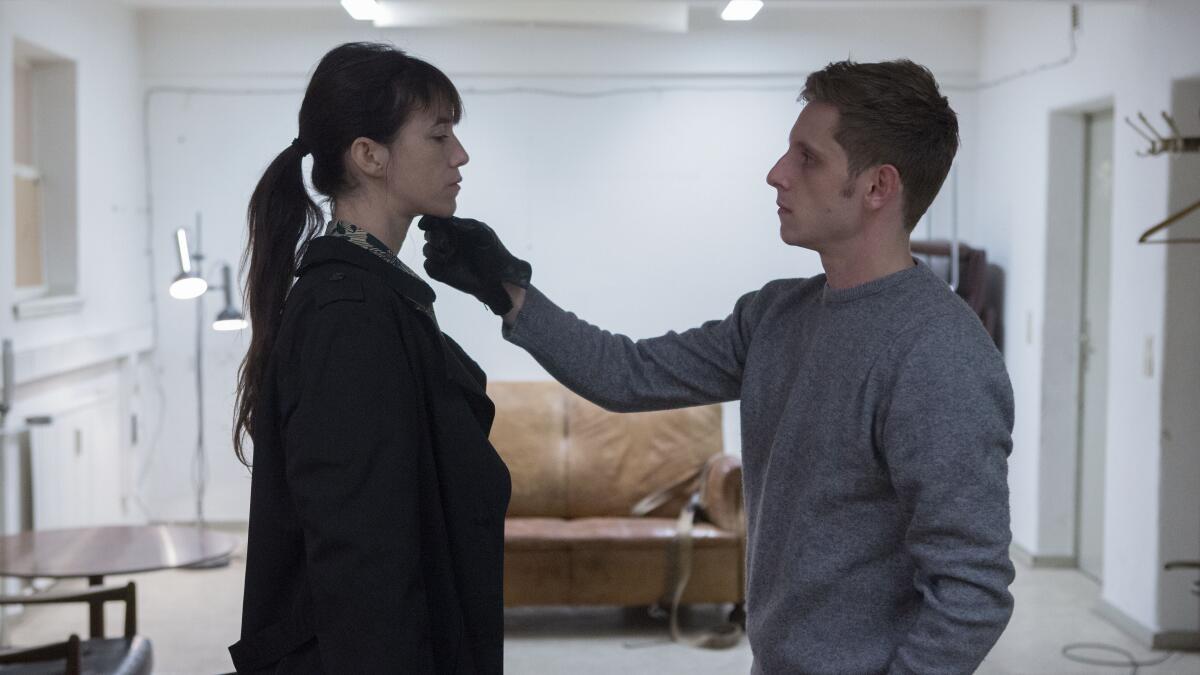Goldie Hawn with ‘The Sugarland Express,’ plus the week’s best movies
Hello! I’m Mark Olsen. Welcome to another edition of your regular field guide to a world of Only Good Movies.
The Cannes Film Festival is winding down, with the awards ceremony happening on Saturday. Amy Nicholson and Joshua Rothkopf have been there, watching as many films as they can. In a notebook dispatch from the fest’s first week, Amy covered many early titles, including Harris Dickinson’s directing debut, “Urchin,” Ari Aster’s “Eddington,” Dominik Moll’s “Dossier 137,” Sergei Loznitsa’s “Two Prosecuters” and Oliver Laxe’s “Sirât.” A second diary is live now, covering several films including Spike Lee’s “Highest 2 Lowest” and the directorial debut of Kristen Stewart, “The Chronology of Water.”
Josh spoke to filmmaker Lynne Ramsay about her long-awaited return with “Die, My Love,” a tale of the struggles of motherhood, starring Jennifer Lawrence and Robert Pattinson. So far the film has become the festival’s biggest acquisition, picked up by “The Substance’s” distributor Mubi for a reported $24 million.

Director Lynne Ramsay on the set of the movie “Die, My Love.”
(Kimberly French)
Ramsay spoke about working with Lawrence and Pattinson, who, besides being big stars, are committed performers as well.
“I think they were very willing participants,” said Ramsay. “There was a lot of trust. I try and create an atmosphere of trust and I just threw them into the fire. I did the sex scene on the first day. I thought it’s a risk. It’s either going to work or it’s going to be a disaster. But I could see there was chemistry. And when they arrived, I was getting them dancing. They were dancing together, synchronized. And it was fun. And then I think Robert was a little nervous, but then something just kind of broke the ice.”
Josh also spoke to director Ari Aster about “Eddington” and whether he set out to make his most overtly politically charged film to date with the story of a small town’s sheriff (Joaquin Phoenix) and mayor (Pedro Pascal) sparring during the early days of the pandemic.
“I am just following my impulses, so I’m not thinking in that way,” said Aster. “There’s very little strategy going on. It’s just: What am I interested in? And when I started writing, because I was in a real state of fear and anxiety about what was happening in the country and what was happening in the world, and I wanted to make a film about what it was feeling like.”
‘The Sugarland Express’ and our Spielberg Summer
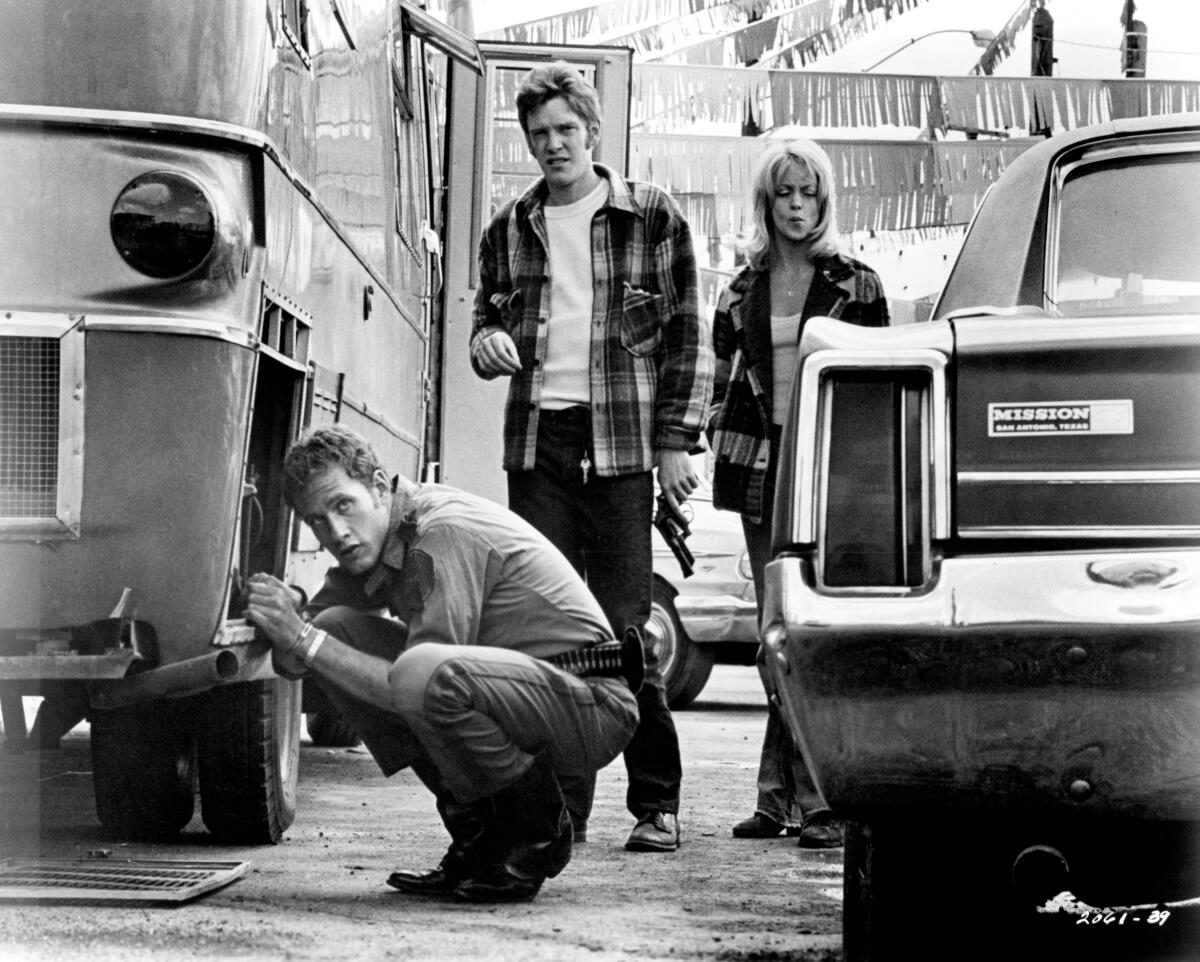
Michael Sacks, left, William Atherton and Goldie Hawn in the 1974 movie “The Sugarland Express.”
(Michael Ochs Archives / Getty Images / Universal Pictures)
We seem to be on the verge of a summer of Spielberg. After last week’s screening of 2002’s “Minority Report,” this Thursday brings a showing of Spielberg’s 1974 “The Sugarland Express” at the Academy Museum with a conversation with the film’s star, Goldie Hawn.
There are also multiple opportunities to see “Jaws” this Memorial Day weekend in celebration of the film’s 50th anniversary, including presentations at the Egyptian, the New Beverly, Vidiots and the Frida Cinema. The film will also play at the Hollywood Bowl on July 5, with a live performance of John Williams’ score by the Los Angeles Philharmonic.
“The Sugarland Express,” screening in a 4K restoration from the original 35mm camera negative, was Spielberg’s theatrical feature debut. As tempting as it is to view it for the seeds of what was still to come, the movie is a fully formed charmer all on its own.
Lou Jean Poplin (Hawn) convinces her husband (William Atherton) to escape from prison just a few months from being released because their son is about to be placed for adoption. When the pair wind up taking a police officer hostage, their journey across Texas becomes an unlikely pursuit involving the authorities and the media.
In an April 1974 review, Kevin Thomas called the film “dazzling, funny, exciting and finally poignant. … An increasingly disenchanted portrait of contemporary America.”
Thomas added, “Spielberg and his associates are trying for entertainment rather than profundity, and ‘The Sugarland Express’ is anything but heavy. But it is incisive as it is rapid, like the more optimistic vintage Capra films it brings to mind. … When all things are considered, however, one realizes it is Goldie Hawn who gives the film its focus and dimension, making Lou Jean at once very funny and very sad, quite real, and for all her intransigence, most appealing.”
In a March 1973 report from the set, Hawn spoke to reporter Jeff Millar. She said it took a year after the film “Butterflies Are Free” to find another project that excited her as much. “I flipped when I saw this one,” Hawn said. “It’s a different kind of role for me. She’s aggressive. She’s a leader, she’s comical. But she’s still a plain country girl.
“I guess the most exciting thing is the director,” Hawn continued. “I’d never met him, but everybody knew about him, you know? ‘Oh yeah, you’re going to do a picture with Steve Spielberg. The bright young guy who’s coming up…’”
In comments that bring to mind his recent film “The Fabelmans,” Spielberg, 25 at the time, told Millar, “I’ve been making pictures in 8mm, 16mm and 35mm since I was 15. This is the fourth year I’ve had that Directors Guild of America card. I’ve been directing in television since I was 21.”
Of the movie, he added, “I wanted to shoot in Texas because it’s so big. I’m very into Americana — and Texas is a lot more Americana to me than, well, Kansas or Andrew Wyeth.”
Points of interest
Susan Sontag’s ‘Duet for Cannibals’
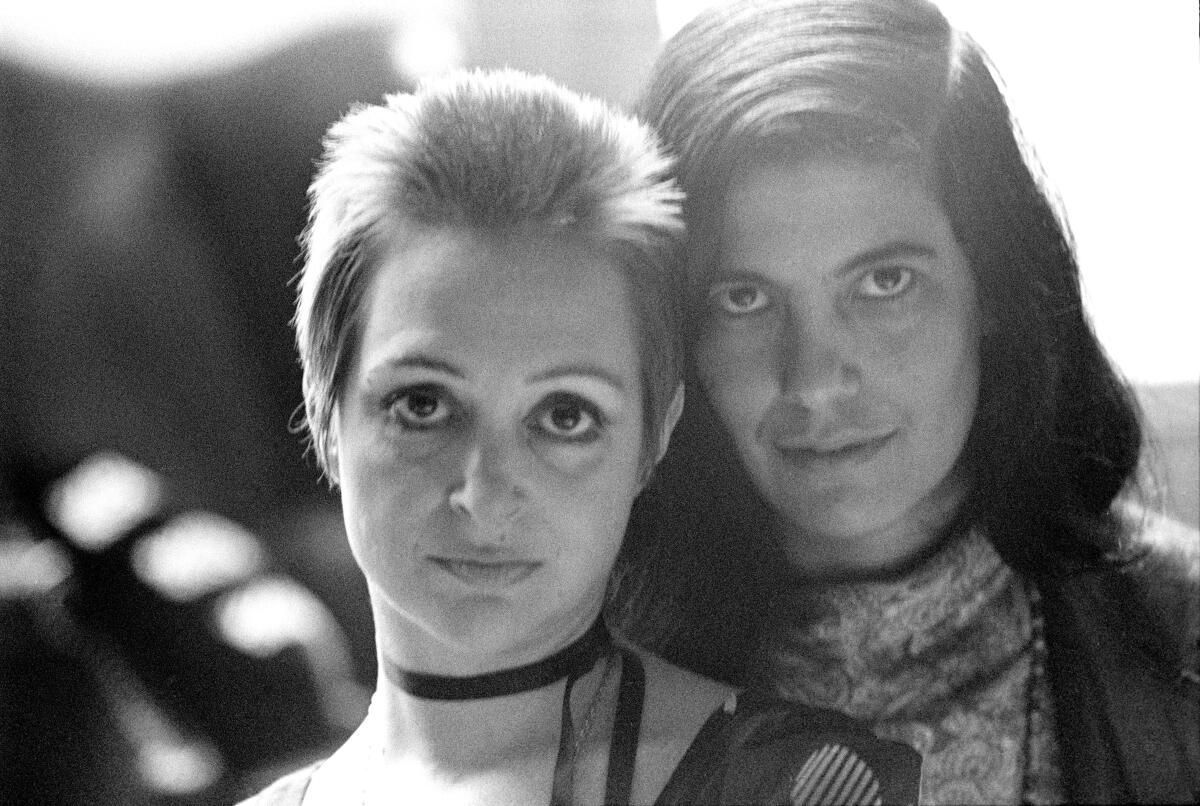
Adriana Asti, left, and Susan Sontag making their 1969 film “Duet for Cannibals.”
(Susan Wood / Getty Images)
In 1968, Susan Sontag, already a well-known and deeply influential writer and critic, was invited to Stockholm to make her first movie. The result was “Duet for Cannibals,” a darkly comedic satire of bourgeois values focused on two couples. The film plays at Vidiots on Wednesday.
In May 1973, Kevin Thomas wrote about the film when it had a few screenings at an art gallery and restaurant near LACMA, noting that it “demonstrates Susan Sontag is as gifted a filmmaker as she is a critic and philosopher.”
Thomas concluded, “Sontag illuminates human potential, with emphasis on its bent for destruction yet capacity to endure to a breathtaking fullness. In this bravura example of a work of art that achieves maximum of means, Susan Sontag proves she is a critic who can practice what she preaches.”
‘How to Get Ahead in Advertising’

Richard E. Grant in the movie “How to Get Ahead in Advertising.”
(Janus Films)
Writer-director Bruce Robinson followed up his cult hit “Withnail & I” with 1989’s “How To Get Ahead in Advertising,” a bitter satire of commercialization and the media. Richard E. Grant plays rising advertising executive Denis Dimbleby Bagley, who, while suffering an ethical crisis over the impact of his work, develops a boil on his neck that begins talking to him. The film will play in a new restoration at the Los Feliz 3 on Sunday, Wednesday and Thursday.
In a May 1989 review, Sheila Benson called the movie “a strange piece, to be sure. It’s cruel, funny, knowing, never less than biting and occasionally brilliant. Pure fury seems to have driven Robinson to it. … There are problems in creating something as simultaneously funny and unlovely as a talking boil. It’s possible that some audiences will lose interest once they learn that the effects are good but minor; the boil, even when grown to full manhood (boilhood?) isn’t a patch on ‘The Fly.’ But then, this isn’t that sort of movie. This is a blistering broadside, a warning for the safety of our souls.”
In a set visit by Bart Mills published around the film’s release, Robinson, then 43, did an interview from his office at Shepperton Studios outside London.
He said it was his own disillusionment at “the constant stream of disinformation the media and the politicians give us” that inspired the story. “This is the kind of anger I feel all the time. All the time. It’s intolerable. The only thing that saves me, that keeps the electrodes off my head, is that, thank God, I’m allowed to make a movie about it.”
Yet, Robinson added, “I don’t believe the cinema can change anything. It’s not a teacher, it’s an entertainer. I enjoy finding a comedic way to exploit my burning rage.”
The short films of Charles and Ray Eames

The title frame for Charles and Ray Eames’ 1955 short film “House: After Five Years of Living.”
(Eames Office, LLC.)
On Wednesday, the Philosophical Research Society and the Charles and Ray Eames Foundation will host an evening celebrating the famous creative duo. There will be a program of seven of the Eames’ shorts, including 1955’s “House: After Five Years of Living,” 1964’s “Think” and likely their best-known film, 1977’s “Powers of Ten.”
The event will also include a panel discussion moderated by programmer Alex McDonald including the Eames’ grandson Eames Demetrios, art director Jeannine Oppewall and the creative pair of Adi Goodrich and Sean Pecknold, known as Sing-Sing.
Writing about the enduring influence of the Eames in 2012, David L. Ulin said, “In our age of constant contact, it’s almost impossible to step away from the workplace even when we’re off the clock. And yet, if the Eameses have anything to tell us, it’s that we can — must — aspire to a higher integration, in which work should not only feed our stomach but also, and more importantly, our souls.”
In other news
Rolf Saxon accepts another ‘Mission’

Actor Rolf Saxon, photographed at the Museum of the Moving Image in Queens, New York.
(Justin Jun Lee / For The Times)
Fans of the “Mission: Impossible” franchise are in for a real surprise when they see the new sequel “The Final Reckoning,” which opens this weekend. Actor Rolf Saxon, who had a memorable turn in the first film in 1996, is back with a surprisingly large role in the new film.
Saxon’s character of CIA analyst William Donloe was sent to a radar station in Alaska after his computer station got hacked by Tom Cruise’s Ethan Hunt in one of the series’ signature set pieces. In the new film, it turns out Donloe has been in Alaska the entire time and now may have vital information for the Impossible Mission Force.
The new film brought Saxon to caves in the English midlands and, most spectacularly, Svalbard, an archipelago off the northern coast of Norway.
“This was in many ways a dream job,” says Saxon. “The people I’m working with, the thing I’m working on and the places I got to go to work — it’s just like, what would you really like to do? Here it is.”
My extended feature with Saxon goes live a little later this afternoon. Stay tuned.

